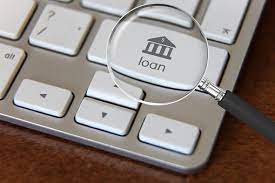A loan application process can be smooth, simplified, and streamlined without unnecessary complexities or a complicated experience. Regardless of the purpose of the loan, be it to start a business venture or buy a house, even with poor or nonexistent credit history, the application process shouldn’t be tiresome. So if you intend to take out a loan, this step-by-step guide streamlines the process, giving you access to the needed funds in record time. You don’t necessarily have to go through a rigorous process to get an approved loan. Ready to learn something new? Let’s get started.
How to Apply for a Loan to Start a Business
Getting a loan to launch a business is a huge step that requires great consideration. Before applying for a loan, you should do your homework and, if necessary, get some expert guidance. Applying for a loan to start a business requires careful planning and preparation to increase your chances of approval. Below is a step-by-step guide to help you through the process:
#1. Develop a Solid Business Plan
Before applying for a loan, create a comprehensive business plan that outlines your business idea, target market, products or services, financial projections, marketing strategy, and growth potential. This will show lenders that you have a clear vision for your business and a plan to succeed.
#2. Determine the Loan Amount
Assess how much funding you need to start your business. Be specific about how the funds will be used, whether it’s for equipment, inventory, hiring staff, or other essential expenses.
#3. Research Different Lenders
Explore various lending options, such as banks, credit unions, online lenders, and government programs. Each type of lender may have different requirements and interest rates, so compare and choose the one that best suits your needs.
#4. Check Your Credit Score
Lenders will consider your credit score when evaluating your loan application. Check your credit score and review your credit report to ensure no errors or discrepancies could affect your eligibility.
#5. Gather Required Documents
Lenders will typically ask for documentation to assess your creditworthiness and the viability of your business. Common documents include business plans, financial statements, tax returns, bank statements, business licenses, and legal agreements.
#6. Prepare a Loan Proposal
Craft a persuasive loan proposal that highlights the strengths of your business plan, how you will use the loan, and your ability to repay it. Address potential risks and show your lender that you have contingency plans in place.
#7. Secure Collateral (if required)
Depending on the type of loan and your creditworthiness, the lender may require collateral to secure the loan. Collateral can be personal or business assets that the lender can claim if you default on the loan.
#8. Apply for the Loan
Submit your loan application along with all the required documents to the lender of your choice. You may need to fill out application forms and provide additional information during this process.
#9. Wait for Approval
The lender will review your application and assess your creditworthiness and the potential of your business. The approval process may take some time, so be patient.
#10. Review Loan Terms
If your loan is approved, carefully review the loan terms and conditions. Pay attention to the interest rate, repayment schedule, any fees involved, and other essential details.
#11. Accept the Loan
If you agree with the terms, accept the loan offer and follow any instructions provided by the lender to finalize the loan agreement.
How to Apply for a Loan With No Credit
Applying for a loan with no credit history can be challenging, but it’s not impossible. Generally, lenders use credit history to assess an applicant’s creditworthiness and determine the risk of lending money. Without a credit history, you’ll need to take alternative approaches to demonstrate your ability to repay the loan. The following are some steps to help you apply for a loan with no credit:
#1. Build a Relationship with a Local Bank or Credit Union
If you have a checking or savings account with a bank or credit union, they may be more willing to consider your loan application based on your account history and financial behavior.
#2. Explore Credit Builder Loans
Some banks and credit unions offer credit builder loans specifically designed to help individuals establish or improve their credit. With these loans, the funds are typically held in a savings account, and you make regular payments. Once the loan is fully repaid, you receive the funds, and the timely payments are reported to credit bureaus, helping you build credit.
#3. Apply for a Secured Loan
A secured loan requires you to provide collateral, such as a savings account, certificate of deposit (CD), or valuable asset. If you default on the loan, the lender can claim the collateral. Because there is less risk for the lender, secured loans are more accessible to individuals with no credit history.
#4. Find a Co-Signer
If you have a family member or a close friend with good credit, they can act as a co-signer on the loan. The co-signer guarantees to repay the loan if you are unable to do so, providing the lender with more confidence in approving your application.
#5. Consider Online Lenders and Credit Unions
Some online lenders and credit unions are more lenient in their lending criteria and may consider other factors beyond credit history when evaluating loan applications.
#6. Show Proof of Income and Stability
Lenders want to see that you have a stable source of income and can afford the loan payments. Gather documents such as pay stubs, employment verification, and tax returns to demonstrate your financial capacity.
#7. Start with a Small Loan
Applying for a smaller loan amount increases your chances of approval. Once you establish a positive repayment history with a small loan, you may become eligible for larger loans in the future.
#8. Explain Your Situation
When applying for the loan, write a letter to the lender explaining your lack of credit history and how you plan to manage the loan responsibly. Being honest and transparent about your situation can sometimes help your case.
How to Apply for a Loan for a House
Applying for a loan to buy a house can be a significant and complex process, but here’s a step-by-step guide to help you through it:
#1. Assess Your Financial Situation
Before applying for a home loan, take a close look at your finances. Consider your income, expenses, savings, and credit score. Understanding your financial standing will give you an idea of the type of loan and the amount you can afford.
#2. Check Your Credit Score
Lenders will use your credit score to assess your creditworthiness. A higher credit score typically leads to better loan terms and interest rates. Obtain a copy of your credit report from the major credit bureaus and review it for any errors or discrepancies.
#3. Save for a Down Payment
Most home loans require a down payment, which is a percentage of the property’s purchase price that you pay upfront. The larger the down payment, the less you’ll need to borrow, and it may also improve your loan terms.
#3. Research Loan Options
There are various types of home loans available, such as conventional loans, FHA loans, VA loans (for veterans), and USDA loans (for rural areas). Each has different eligibility criteria and terms. Research and compare these options to determine which one suits you best.
#4. Get Pre-approved
Before house hunting, it’s advisable to get pre-approved for a loan. Pre-approval involves providing the necessary financial information to a lender, who will then assess your eligibility and provide a tentative loan amount. Pre-approval gives you an idea of your budget while making you a more attractive buyer to sellers.
#5. Gather Documentation
Lenders require several documents during the loan application process. These may include proof of income (pay stubs, tax returns), bank statements, identification, employment verification, and any additional documentation specific to the type of loan you’re applying for.
#6. Choose a Lender
Shop around for lenders and compare interest rates, fees, and loan terms. You can approach banks, credit unions, online lenders, or mortgage brokers to find the best deal for your needs.
#7. Submit the Loan Application
Complete the loan application that the lender of your choice provides. Be thorough and accurate in providing your financial details.
#8. Undergo the Underwriting Process
After you submit your application, the lender will conduct a thorough review of your financial profile. This process is called underwriting, where they assess your creditworthiness, the property’s value, and your ability to repay the loan.
#9. Receive the Loan Decision
Once the underwriting process is complete, the lender will inform you of their decision. They may approve the loan, offer different terms, or, in some cases, deny the application.
#10. Complete the Closing Process
If your loan is approved, you’ll proceed to the closing process. This involves signing all the necessary paperwork, paying closing costs, and officially securing the loan.
How to Apply for a Loan From the Bank
Banks’ loan application processes may vary between different banks; however, the overall steps are similar. Read all the terms and conditions before committing to a loan, and only borrow what you can afford to repay. If you need a bank loan, the following guide will be of help:
#1. Determine Your Loan Requirements
Decide how much money you need to borrow and what type of loan you want (personal loan, home loan, auto loan, etc.). Understand your financial situation and repayment capabilities.
#2. Research Different Banks
Look into different banks and financial institutions to compare their loan offerings, interest rates, terms, and eligibility criteria. Choose a bank that suits your needs and has favorable terms.
#3. Check Your Credit Score
Your credit score plays a crucial role in loan approval. Check your credit score to ensure it meets the bank’s minimum requirements. A good credit score increases your chances of getting a loan on better terms.
#4. Gather the Necessary Documents
Banks require various documents to process loan applications. Standard documents include identification proof, address proof, income statements (salary slips, tax returns), bank statements, and any collateral documents (if applicable).
#5. Pre-Application Inquiry
Some banks allow you to make a pre-application inquiry to get an idea of your eligibility and the loan terms without impacting your credit score. This can be helpful to understand your chances of approval before submitting a formal application.
#6. Visit the Bank or Apply Online
Once you’ve chosen the bank, visit the nearest branch or apply online through the bank’s website (many banks offer online application options).
#6. Meet with a Loan Officer (Optional)
If you visit the branch, you may meet with a loan officer who can guide you through the application process and answer any questions you may have.
#7. Submit the Loan Application
Fill out the loan application form carefully and accurately. Double-check all the information before submitting it to avoid errors.
#8. Wait for Approval
After applying, the bank will review your application and the provided documents. This process may take a few days to a few weeks, depending on the type of loan and the bank’s processing times.
#9. Loan Approval and Terms
If your loan is approved, the bank will notify you about the approval and provide you with the loan offer, including the loan amount, interest rate, repayment schedule, and any other terms and conditions.
#10. Accept the Loan Offer and Receive the Loan Amount
Review the loan offer carefully and ensure you understand all the terms. If you agree to the terms, you must sign the loan agreement to accept the offer officially. Once you’ve accepted the loan offer and completed any additional formalities, the loan amount will be disbursed to your bank account.
How Do I Write an Application For a Loan?
The first step to writing a loan application is to research the loan options. This helps you understand the terms, interest rates, repayment periods, and eligibility requirements for each type of loan. It will also help you identify the relevant document that the loan option or your lender demands. The following is how to write a loan application letter:
#1. Open with a Formal Salutation
Begin your loan application with a formal salutation such as “Dear [Lender’s Name]” or “To Whom It May Concern.”
#2. Introduce Yourself
Provide a brief introduction that includes your name, address, contact information, and the purpose of the loan (e.g., home purchase, business expansion, etc.).
#3. Explain the Loan Amount and Purpose
Clearly state the amount of money you are seeking to borrow and explain in detail the purpose of the loan. Be specific and demonstrate that you have a clear plan for how the funds will be used.
#4. Present Your Financial Situation
Provide an overview of your current financial situation. Include details about your employment status, income sources, assets, and liabilities. This information helps the lender assess your ability to repay the loan.
#5. Provide Details of Collateral (If Applicable)
If the loan requires collateral (e.g., a car or property), describe the asset and its value. This gives the lender security in case you default on the loan.
#6. Discuss the Repayment Plan
Outline your proposed repayment plan. Mention the loan term you are seeking (e.g., 5 years) and explain how you plan to make regular, timely payments. If you have any specific circumstances that affect your ability to repay, address them here as well.
#7. Highlight Your Creditworthiness
If you have a good credit history or any other positive factors that make you a reliable borrower, make sure to highlight them in your application.
#8. Request the Loan
Politely request the loan amount you need and state your willingness to provide any additional information or documents the lender may require for the application process.
#9. End with a Thank You
Conclude the application with a thank-you note for considering your request and expressing your appreciation for their time and consideration.
#10. Proofread and Review
Proofread it carefully to ensure there are no errors or typos. A professional and error-free application creates a good impression.
How Can I Borrow a Large Amount of Money?
To obtain a substantial loan, several steps can be taken. Firstly, it is crucial to thoroughly research and identify potential lenders who specialize in providing large loan amounts. This can be done by consulting financial institutions, such as banks or credit unions, as well as online lending platforms. Once potential lenders have been identified, it’s vital to gather and organize all the necessary documentation that will qualify you for the loan. There are lenders that can extend loan amounts of up to $50,000, while a limited number of lenders can offer loan amounts of $100,000 or higher.
What Are 3 Ways to Borrow Money?
The best ways to borrow money are:
- Bank or credit union personal loan.
- Online personal loan.
- 0% APR credit card.
- Margin account.
- Peer-to-peer lending.
- 401(k) loan.
- Personal line of credit.
- Buy now, pay later.
Where Can I Borrow Money Easily?
The following are places where you can borrow money easily:
- Banks and Credit Unions
- Online Lenders
- Peer-to-Peer Lending
- Family and Friends
- Credit Cards
- Credit Unions
How Can I Get Money Now?
If you need money urgently, you can check out the following options:
- Borrow from friends and family
- Sell items you no longer need
- Get an installment loan from an online lender
- Consider a credit card cash advance
- Take items to a pawn shop
- Borrow from your retirement account
- Request a payroll advance from your employer
- HOW TO GET A BANK LOAN: All You Need to Know
- BEST LENDERS FOR HOME LOANS: Tips to Consider and Examples for You
- Lenders for Poor Credit: Best Options






